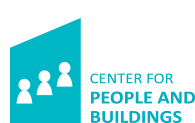Implementing innovative workplaces - pay now or pay later
9 march 2016

"In effect, organizations have the freedom to" pay now or pay later. " There is no free ride when it comes to process. "
Focus on process side often falls short
In the daily practice of workplace innovation the focus on the process side often falls short. We see this reflected in the research into innovative working environments. There too, investigating the process and the impact it has on the success of workplace innovation, gets little attention. Usually, research focuses on the effects of various office concepts and specific elements within these concepts (lighting, acoustics, mix of workplaces, zoning, etc.). De Bruyne (2007) filled the gap somewhat with a literature study on the implementation of office innovation. She drew mainly from taking literature of change management since implementation research in the field of workplace innovation proved scarce. To our knowledge only one comprehensive scientific quantitative field study has been carried out that focused on the process side of workplace innovation. But, even though it’s only one study, it is a very interesting study with striking results.
Study clearly shows importance of the process
It is the study "Implementing Innovative Workplaces' by Frank Becker et al. at Cornell University in the United States (1994). The study took place within the framework of the International Workplace Studies Program. This international research was sponsored by 16 organizations including large parties such as General Electric, Ernst & Young, IBM, Xerox and the Dutch Central Government Real Estate Agency.
The (partial) study ‘Implementing Innovative Workplaces' focused specifically on the impact of the process on the side effects of workplace innovation. The study looked at five companies in four countries (with a total of 13 branches; 1731 respondents) that implemented different types of innovative work environments. Below are some of the key findings and lessons:
- Business-driven projects score significantly better than cost-driven projects on indicators such as user satisfaction, work effectiveness, project duration, and project acceptance. These projects also provide the most innovative workplace solutions.
- Projects with a process-oriented approach significantly outperform projects that are result-oriented on indicators such as user satisfaction, work effectiveness, project duration, and project acceptance. Result-oriented projects are however less costly.
- The implementation process is one of the most important factors that determines the success or failure of a project. The impact of the office layout design and IT support, on the success of the project, is less strong.
- The presence of a strong ‘project champion’ is very important for the success of the project.
- Most projects in the study lacked an integrated workplace strategy (a whole of a wide variety of workplaces in and out of the office, supported by the right technology, business processes and organizational culture).
- As projects evolve, changes occur in the process. And it seems that as projects become bigger, the attention given to the implementation process decreases; end users become less involved. As a result, smaller pilot projects are almost always more successful than larger widespread implementations.
- Taking away peoples’ own personal workplace (without ‘compensation’) will lead to resentment, discontentment and reduced performance.
- User participation is crucial to the success of a project. It can be costly and time-consuming, but is necessary. It ensures that the developed workplace strategy meets the needs of employees, and that they understand why it is implemented.
- It is advisable to reinvest part of the saved costs of the workplace into good workplaces and an appropriate implementation. This leads to much higher levels of employee satisfaction and self-reported productivity.
Click here for the full report (362 p's).
